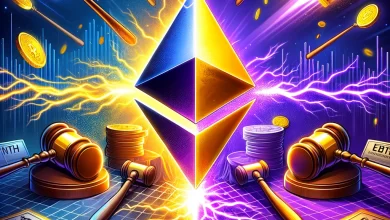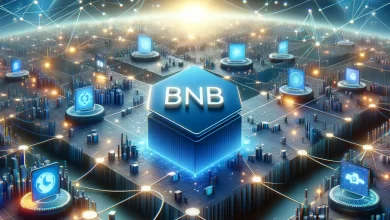LiveCoin CEO: Pump & Dump Is What Defines Sustainability of New Coins
LiveCoin.net is more than two years old: it has officially opened on March 1st, 2015. The exchange features simple sign-up procedure, lack of verification-related complexities at early phases of work, and a referral program. In addition, the exchange offers a modern-day account security system featuring two-factor authentication, the option for IP blocking and free-of-charge text notifications.
ForkLog talked with Livecoin.net CEO Svetlana Geller about the latest news and the exchange’s plans for the future.
ForkLog: Women in cryptoindustry are quite rare. How did you make it to the cryptoworld?
Svetlana Geller: I’ve been working with online resources for a while, it’s been around 15 years. I started back when the internet only appeared in the post-Soviet realm. Then I met a great team I still keep on working with. When the crypto stuff made it to the businesses, we noticed it and started developing an exchange project. Unfortunately, it took us almost a year to develop an engine, which gave a head start to our competitors.
I was the one who supervised the development of a cryptoexchange, and that’s how I made it to the complex and amazing world of cryptocurrencies. The project team isn’t very big, we don’t have an extended staff or beautifully sounding positions, we’re just a friendly team where everybody knows what they’re doing. We have a few different programmers, a few support specialists, and a few admins.
FL: When did you decide to launch your own altcoin exchange? What makes it different from the others?
S. G.: Initially, we wanted to launch a bitcoin exchange, but as we wrote and tested the script for a year, there were lots of competitors. That’s why we opted for altcoins. We’re different from the others because we use cold storage for customer assets (far from every exchange does that). Also, we offer prompt support, simple interfacing that any rookie can understand, support of different languages; however, our main difference is probably that we really do what the majority of our customers asks us to do. Sometimes we comply with one-time requests because we try to be as client-focused as possible.
FL: What problems did you face?
S. G.:Â There were lots of problems, yet the most important one is that all altcoins have their own features sometimes actually resembling bugs and glitches. That’s the biggest problem we’ve got to face. Nodes may work sporadically, blockchain may get edited, and coins may suddenly get issued. In fact, there can be a whole lot of problems you have to face non-stop every single day.
FL: Would you recommend one to run such a business?
S. G.: We sure wouldn’t recommend anyone to deal with running an altcoin exchange as the number of issues is sky-high, which is especially bad as you’ll have to tackle all those issues and spend a lot of your time on coins with monthly turnover of 2 or 3 BTC and exchange fee of $5 to 10, and you just can’t ignore those issues. The conclusion here seems quite obvious.
FL: Well, I guess everybody’s interested how much does a cryptoexchange make in average.
S. G.: If you offer a steady fee like some major exchanges do, and don’t provide your customers with floating rate, an exchange could make a fortune in case there is a great turnover. In our case, floating rate isn’t an option at this stage. Our average fee is at least 0.09% per a transaction, which might be the industry’s lowest. So we don’t make too much money. Altcoin exchanges make a lion’s share of their profits from fees as fiat deposits and withdrawals are extremely rare.
FL: Is it hard to run a cryptocurrency business in the former USSR in terms of legislation? What about taxes?
S. G.: Running a cryptocurrency business in the former USSR is simply impossible due to lack of relevant legislation and a strong informal urge of law enforcement to ban every cryptocurrency operation, even though there’s no direct ban in Russia or Ukraine.
So, there’s no official business in the former USSR, and neither exchange pays taxes. All ‘Russian’ exchanges work in foreign jurisdictions offering international services, which is not prohibited, to the customers some of which might reside in the former USSR. Using a cryptocurrency exchange is in the customer’s’ responsibility according to the local legislation.
FL: What does the future hold for altcoin exchanges? Will the number of altcoins and their popularity grow?
S. G.: It’s a great question. There will be lots of altcoin exchanges. The number of altcoins will also grow, and so will their popularity. Pump & Dump of such coins doesn’t scare users away: on the contrary, it attracts them. I’d even call it the basic criterion defining a new coin’s sustainability: if it has a plain chart, it’s quite likely to head downwards. However, we all have to understand that neither cryptocurrency grows all the time. Serious backwashes occur all the time, it’s just the way it is. Ethereum, for instance, once grew over $20, then fell back to $7, and now it’s on the march again. It’s a normal lifecycle of any cryptocurrency.
FL: What are LiveCoin’s plans for the future?
S. G.: Lots of plans. There are some interesting ideas not related to adding some new coins. We’d love to launch some pilot projects on high risk finance and see whether our customers like it. We’ve temporarily suspended adding new coins due to a technical overhaul of the entire exchange. Our loads have grown by 20 times, so the architecture requires a serious upgrade. Certainly, we’ll keep on adding new coins once the updating is complete.
FL: And a traditional question: in your opinion, how much will bitcoin cost by the end of 2017?
S. G.: I think it will be around $1,500 with some short-term upsurges.
Source: forklog.media
View original post





